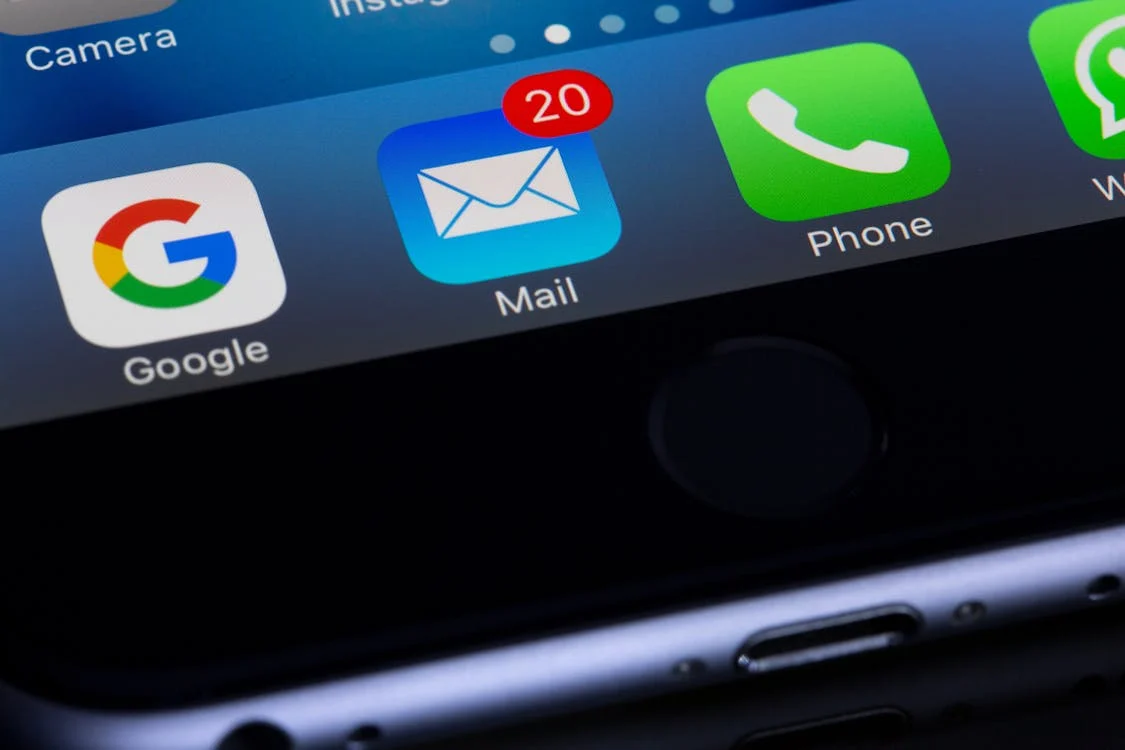Have you ever opened an email on your smartphone, only to pinch and zoom endlessly, trying to make sense of the content? Did you feel frustrated and immediately close the email, vowing never to engage with that sender again? If so, you’re not alone. Many email users experience the same frustration when emails aren’t optimized for mobile devices. Let’s learn the secret to mobile-friendly email designs.
Now, imagine being on the sending end of such emails. Are your messages getting lost in the shuffle simply because they’re not mobile-friendly? What can you do to ensure your emails shine on every screen size, whether it’s a smartphone, tablet, or desktop?
In today’s mobile-first world, email design has become more critical than ever. With so many distractions and competitors vying for attention, how can you stand out and deliver an experience that not only engages but also converts? So, the answer lies in mastering mobile-friendly email designs. Let’s explore the secrets to making your emails irresistible on any device.
Why Mobile-Friendly Email Designs Matters More Than Ever
Mobile email opens are no longer just a trend; they dominate the digital landscape. In fact, 59% of email opens occur on mobile devices, making it imperative for businesses to prioritize mobile-first designs. Furthermore, failing to adapt could mean losing valuable engagement opportunities and tarnishing your brand’s reputation.
Why You Should Prioritize Mobile Optimization – Mobile-Friendly Email Designs
- First Impressions Count: Imagine a potential customer opening your email and finding it hard to read. Additionally, the chances of them closing it immediately are high, and they might never return.
- User Expectations Have Shifted: Today’s consumers expect a seamless experience. So, if navigating your email is frustrating, they’re likely to move on to a competitor.
- Enhance Brand Perception: Mobile-friendly emails demonstrate that you care about your audience’s convenience, reinforcing a positive image of your brand.
Transitioning to mobile-friendly email design isn’t just about following trends; it’s about meeting your audience where they are.
The Core Elements of Mobile-Friendly Email Designs
Creating mobile-friendly emails requires focusing on key design elements that ensure your message is clear, accessible, and visually appealing across all devices.
1. Embrace Responsive Design
Responsive design ensures your email adapts effortlessly to different screen sizes. Whether a recipient is using a smartphone, tablet, or desktop, your email should look polished and professional.
Why It’s Essential:
- Responsive designs prevent awkward formatting and make your content more accessible.
- They utilize flexible grids, scalable images, and media queries to adjust seamlessly.
Pro Tip: Opt for a single-column layout when designing for mobile devices. Additionally, this simplifies the structure, making it easier for users to focus on your content without distractions.
2. Focus on Simplicity
When it comes to mobile email design, less is often more. A cluttered email can overwhelm readers, especially on smaller screens. Instead, strive for a clean and minimalistic look that enhances readability.
Key Considerations:
- Stick to one or two primary objectives per email.
- Use concise, engaging copy to quickly communicate your message.
- Avoid overloading your design with too many images or large files that can slow down load times.
Begin by identifying the most important information your audience needs to see first, and design around that.
3. Design for Touchscreens – Mobile-Friendly Email Designs
Since mobile users interact with emails through touch, your design should cater to this by making navigation intuitive.
What to Include:
- Large, tappable buttons that are easy to click. Aim for buttons that are at least 44×44 pixels.
- Ample spacing between clickable elements to avoid accidental clicks.
Pro Tip: Place your call-to-action (CTA) buttons prominently and ensure they stand out using contrasting colors.

Best Practices for Mobile-Friendly Email Designs
To make your emails not only mobile-friendly but also effective, you’ll need to follow a few tried-and-true best practices.
Optimize Font Sizes for Better Readability
Mobile screens are smaller, which means font sizes need to be larger than those designed for desktops.
- Body Text: Should be at least 14px to ensure readability without zooming.
- Headings: Use bold and larger font sizes to make key points stand out.
- Contrast: Opt for dark text on a light background for maximum visibility.
Use Scannable Content to Keep Attention – Mobile-Friendly Email Designs
Mobile users often skim emails rather than reading them thoroughly. To accommodate this behavior, structure your content so it’s easy to digest:
- Break up text into short paragraphs of 1–2 sentences.
- Include bullet points or numbered lists for clarity.
- Highlight important information with bold text or distinct colors.
Think of your email like a social media post—it should grab attention and communicate quickly.
Prioritize Speed
Slow-loading emails are a dealbreaker. Also, mobile users are often on the go, and if your email doesn’t load quickly, they’ll move on.
How to Ensure Faster Loading Times:
- Compress images to reduce file size without sacrificing quality.
- Limit the use of heavy elements like GIFs or videos.
- Test your email’s load speed using tools like Google PageSpeed Insights.

Tools to Elevate Your Mobile-Friendly Email Designs
So, to achieve the best results, leverage the right tools and platforms:
Email Marketing Platforms
Platforms like Mailchimp, Constant Contact, and HubSpot provide pre-designed, mobile-friendly templates. Additionally, these drag-and-drop tools make it easy to create responsive designs without needing coding expertise.
Testing Tools for Mobile Responsiveness – Mobile-Friendly Email Designs
Use tools like Litmus or Email on Acid to preview how your emails will appear on various devices. These platforms allow you to spot and fix issues before sending.
A/B Testing for Optimization
To understand what works best for your audience, run A/B tests on different design elements, such as subject lines, button placements, and color schemes.
Avoid These Common Mobile-Friendly Email Design Mistakes
Even with the best intentions, it’s easy to make mistakes in mobile email design. So, here are some pitfalls to watch out for:
- Relying Too Heavily on Images
While visuals can enhance your email, relying too much on them can be risky. Always include alt text so your message remains clear even if images don’t load. - Neglecting Your CTA Placement
CTAs should be easy to find and tap. So, position them strategically and ensure they’re immediately visible on mobile screens. - Skipping the Testing Phase
Sending emails without testing their responsiveness can lead to formatting errors that hurt your engagement rates.
Real-Life Success Stories
Real-life success stories highlight how businesses effectively implemented mobile-friendly email designs to boost engagement, conversions, and overall success.
Example 1: Retail E-Commerce
A global retailer increased click-through rates by 40% by adopting a responsive, single-column layout and strategically placing their CTAs early in the email.
Example 2: Service-Based Business
A consulting firm reduced email bounce rates by 25% by switching to mobile-first designs and incorporating personalized greetings and A/B-tested headlines.

The Future of Mobile Email Design
The digital world is evolving, and email design trends are shifting rapidly. So, here are some innovations to keep an eye on:
- Interactive Features: Add elements like image carousels or embedded polls to encourage interaction directly within the email.
- AI-Powered Personalization: Use artificial intelligence to tailor content to individual user preferences, increasing engagement.
- Dark Mode Compatibility: Design your emails to look great in both standard and dark mode settings, as more users adopt this feature.
Conclusion: Mobile-Friendly Email Designs
Creating mobile-friendly email designs isn’t just about aesthetics; it’s about delivering an exceptional experience that engages and converts. Additionally, by embracing responsive design, simplifying your layout, and optimizing for speed and touch, you can ensure your emails resonate with audiences across all devices.
Now is the time to take action. Revisit your current email campaigns and identify opportunities to implement these best practices. With the right tools, strategies, and mindset, you’ll not only meet but exceed your audience’s expectations.
What’s Your Next Step?
How will you start optimizing your emails for mobile today? Share your thoughts and strategies in the comments below!








